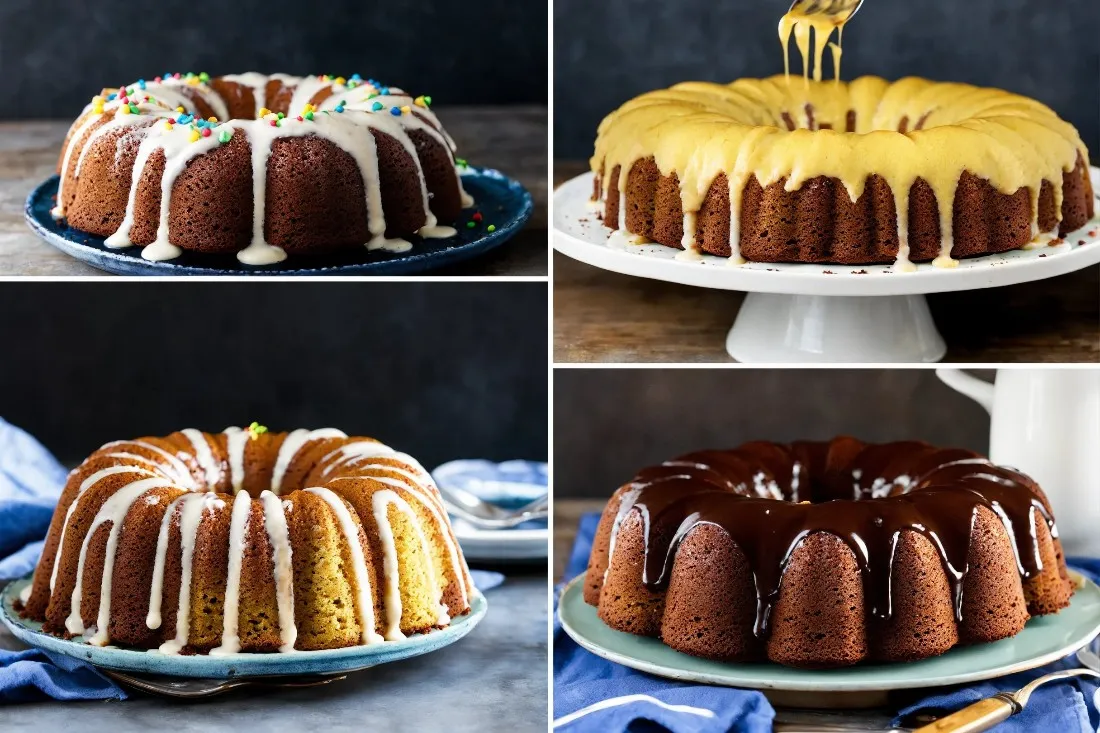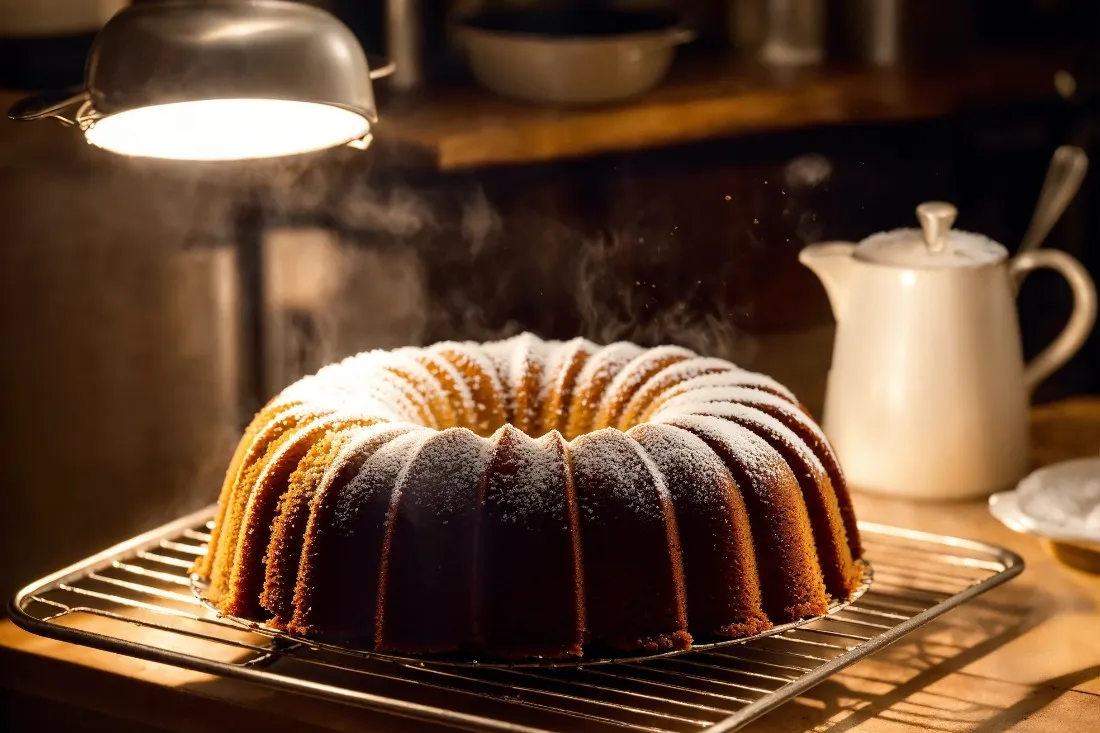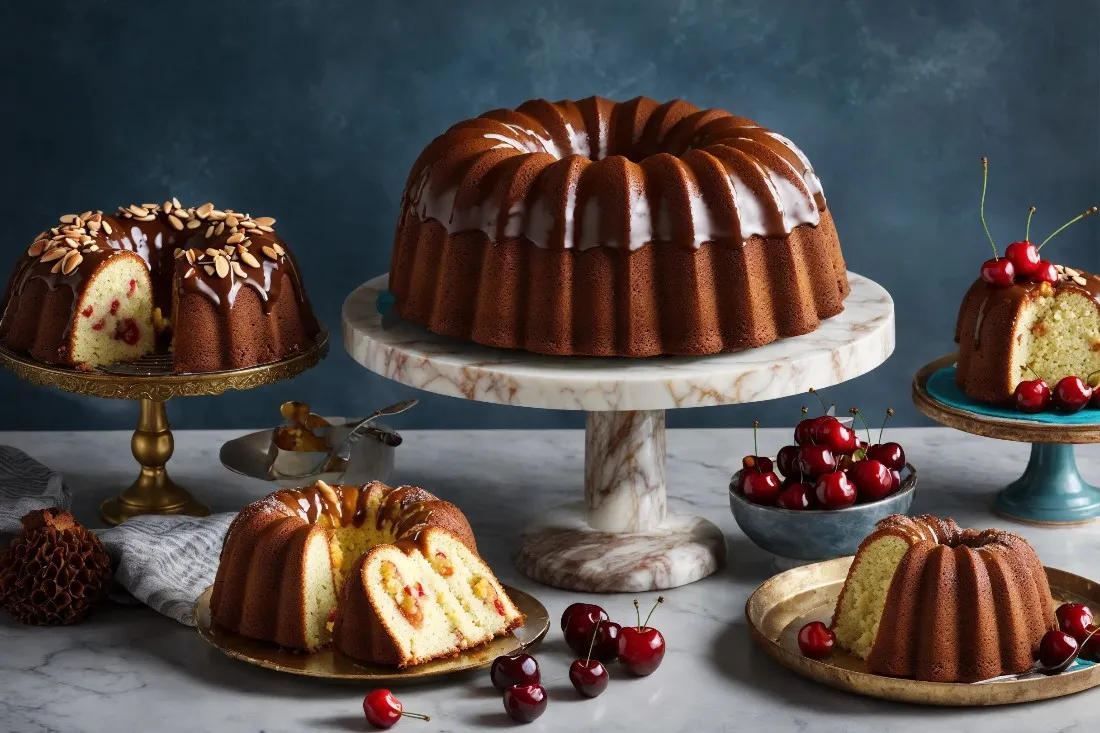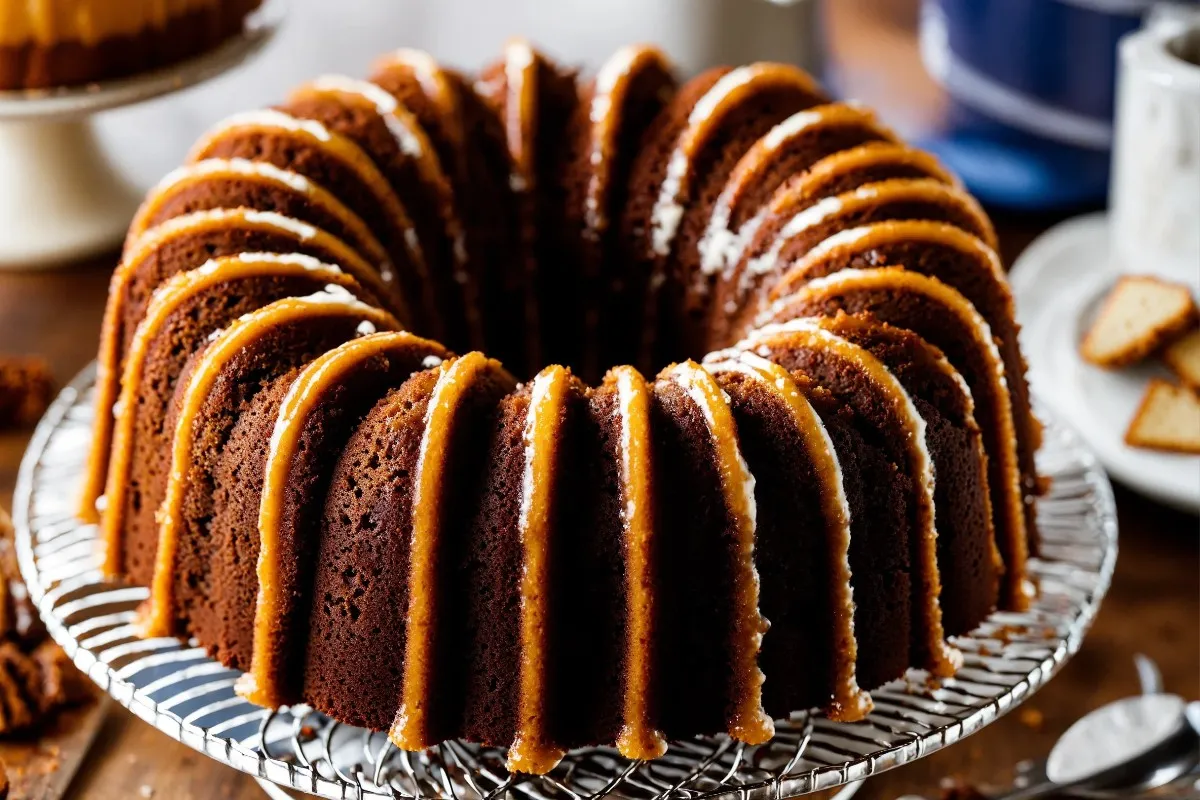Bundt cakes, with their distinctive ring shape and ornate designs, have long been a centerpiece at gatherings and a favorite among home bakers. But even the most experienced bakers can find themselves at a crossroads when it comes to one crucial step: cooling the cake. Do you let it cool in the pan, or take it out? This article dives deep into the art of baking and cooling bundt cakes, offering tips, tricks, and solutions to ensure your cake is as perfect in presentation as it is in taste. From selecting the right pan to the final touches for serving, we’ve got you covered. Let’s embark on this delicious journey, one slice at a time!
Introduction to Bundt Cakes
Understanding Bundt Cakes
Ah, the bundt cake – a true marvel in the world of baking! This isn’t just any ordinary cake; it’s a symbol of culinary elegance and creativity. Originating from Europe and gaining popularity in the United States in the mid-20th century, bundt cakes have become a staple in kitchens worldwide. What sets them apart is their unique shape, characterized by a central tube that ensures even baking and a charming design that’s both visually appealing and functional.
History and Popularity of Bundt Cakes
Bundt cakes have a rich history, intertwining tradition with modern flair. They’ve evolved from simple, dense cakes to elaborate creations, showcasing a variety of flavors and decorations. Their popularity skyrocketed when a famous baking contest in the 1960s crowned a bundt cake as the winner, leading to a surge in bundt pan sales. Today, they’re celebrated for their versatility and the endless possibilities they offer to both novice and seasoned bakers.
The Unique Design of Bundt Pans
The secret to a perfect bundt cake lies in its pan. These pans are known for their intricate grooves and patterns, which not only create a stunning visual effect but also play a crucial role in the cake’s cooking process. The central tube allows heat to circulate evenly, ensuring the cake cooks thoroughly without drying out. Modern bundt pans come in various designs and materials, each adding a unique touch to the final product. Whether you’re aiming for a classic look or something more avant-garde, the right bundt pan can make all the difference.
Preparing the Bundt Pan

Preparing Your Bundt Pan for Baking
Before you even think about mixing your batter, let’s talk about prepping your bundt pan – a crucial step that’s often glossed over. A well-prepared pan is the secret to a bundt cake that releases effortlessly, showcasing those beautiful, intricate designs we all love.
Choosing the Right Pan
First things first, picking the right pan is paramount. While vintage pans have their charm, modern nonstick bundt pans, like the classic Nordic Ware bundt pan, offer a blend of tradition and efficiency. These pans are not only easier to handle but also ensure a more consistent bake. Remember, a lighter-colored pan can prevent over-browning, which is often a sneaky culprit in many baking mishaps.
Greasing the Pan Effectively
Now, let’s grease that pan! But hold on – not so fast with the butter. Opt for solid shortening instead. Why, you ask? Well, butter contains milk solids that can act like glue, making your cake stick to the pan. Using a pastry brush, coat every nook and cranny of your pan with shortening. This step is like setting up a non-stick safety net for your cake.
The Role of Flouring the Pan
After greasing, comes flouring. This dynamic duo of greasing and flouring forms a barrier that prevents the cake from sticking. Sprinkle flour evenly over the greased pan, ensuring you cover all surfaces, including the center tube. Then, give the pan a good tap to remove excess flour. This little dance of flour ensures your cake will slide out smoothly when it’s done.
Baking the Bundt Cake
The Baking Process
With your bundt pan prepped and ready to go, it’s time to turn our attention to the actual baking process. This is where your cake starts to come to life, and paying attention to detail here can make a world of difference.
Pouring the Batter and Baking Tips
Pouring the batter into your bundt pan might seem straightforward, but there’s an art to it. Start by gently spooning the batter in, ensuring an even distribution. This helps avoid air pockets and ensures that the intricate design of your pan is perfectly imprinted on the cake. Smooth the top with a spatula for an even rise.
Now, let’s talk baking. Every oven is a bit different, so it’s crucial to know yours. Always preheat your oven to a consistent temperature. Place your pan in the center of the oven to allow for even heat distribution. Resist the urge to peek too often, as opening the oven door can cause fluctuations in temperature that affect the rise of your cake.
Understanding Baking Times and Temperatures
Bundt cakes generally require a longer baking time due to their density. A good rule of thumb is to start checking for doneness a little before the recipe’s suggested time. Insert a skewer into the thickest part of the cake; if it comes out clean, your cake is done. Remember, overbaking can lead to a dry cake, so keep a close eye on it as it nears completion.
Cooling the Bundt Cake

Cooling Your Bundt Cake – In the Pan or Out?
Ah, the million-dollar question: to cool the bundt cake in the pan or out? This step is crucial, as it can make or break the perfect release of your cake from the pan.
The Importance of Cooling Duration
Once your bundt cake is golden and baked through, resist the temptation to immediately flip it out of the pan. Patience is key here. Allow the cake to cool in the pan for about 10-20 minutes. This cooling period lets the cake settle and firm up, reducing the risk of it breaking apart when you invert it. The cake continues to cook slightly from the residual heat, which can be a blessing for achieving that perfect texture.
Techniques for Cooling in the Pan
During the cooling period, the cake naturally shrinks a bit, detaching itself from the sides of the pan. This is a good thing! It means your cake is setting up for a successful release. If you’re anxious about sticking, you can gently run a butter knife or a spatula around the edges of the cake – but be gentle to preserve those beautiful patterns.
When to Remove the Cake from the Pan
After the initial cooling in the pan, it’s time for the big reveal. Place a wire rack over the cake pan and confidently, but gently, flip it. If you’ve prepared your pan correctly and allowed enough cooling time, your cake should gracefully slide out. If it seems a bit stubborn, give it a few gentle taps or let gravity do its work for a few more minutes.
Troubleshooting Common Issues
Addressing Common Bundt Cake Challenges
Even with the best preparation and baking techniques, sometimes bundt cakes can present challenges. But don’t fret! There are ways to troubleshoot and salvage your cake.
Dealing with a Cake that Sticks
If your cake is sticking to the pan, don’t panic. First, try giving the pan a gentle but firm shake or tap on the counter. If that doesn’t work, you can steam the cake out. Place a damp kitchen towel over the pan and gently heat it on the stove for a few minutes. The steam can help loosen the cake. Remember, patience and gentle handling are your best friends here.
Salvaging a Damaged Bundt Cake
So, your bundt cake didn’t turn out picture-perfect? No problem! There are creative ways to turn a less-than-perfect cake into a delightful dessert. If the cake is broken, consider making a trifle by layering the cake pieces with whipped cream and fruit. Alternatively, use icing or a glaze to cover any imperfections. Sometimes, these “happy accidents” lead to the most delicious and unique creations!
Decorating and Serving

Finishing Touches for Your Bundt Cake
Now that your bundt cake is baked and cooled, it’s time for the fun part – decorating and serving! This is where you can let your creativity shine and give your cake that extra wow factor.
Creative Decorating Ideas
A dusting of powdered sugar can add a simple yet elegant touch to your bundt cake, highlighting its intricate design. For something a bit more decadent, a drizzle of glaze or chocolate ganache can be both beautiful and delicious. If you’re feeling adventurous, edible flowers or fruit can add a pop of color and a fresh twist. Remember, the key is to enhance the cake’s natural beauty, not overwhelm it.
Best Practices for Serving
When it comes to serving your bundt cake, a few tips can go a long way. Use a serrated knife for clean cuts, and if you’re serving a glazed or frosted cake, let the icing set before slicing. Serve your cake on a stand or platter that complements its shape and design. And most importantly, enjoy the process and the pleasure of sharing your creation with others!
Advanced Bundt Cake Techniques and Variations
Exploring Advanced Techniques
For those looking to elevate their bundt cake game, experimenting with advanced baking techniques can be both fun and rewarding. Consequently, let’s delve into some methods that can add complexity and sophistication to your bundt cakes.
- Marbling: Firstly, by swirling together different colored or flavored batters, you can create a stunning marbled effect in your cake. This technique not only looks impressive but also adds a delightful contrast of flavors.
- Layering: Additionally, consider layering different flavors of batter for a multi-dimensional taste experience. This requires careful pouring and timing to ensure distinct layers that don’t blend during baking.
- Filling: Furthermore, adding a filling to your bundt cake, such as fruit preserves, lemon curd, or chocolate ganache, can surprise and delight your guests. The key is to add the filling carefully and bake it just right so it integrates seamlessly into the cake.
Creative Variations
Bundt cakes are incredibly versatile, and playing with different recipes can lead to exciting new flavors and textures. Here are some ideas to inspire your next baking adventure:
- Savory Bundt Cakes: Who says bundt cakes have to be sweet? Explore savory options like cheese and herb or sun-dried tomato and olive bundt cakes for a delightful twist.
- Gluten-Free and Vegan Options: Moreover, cater to all dietary needs by experimenting with gluten-free flour and vegan substitutes. There’s a world of possibilities in creating bundt cakes that everyone can enjoy.
- Seasonal Flavors: Lastly, embrace the seasons by incorporating seasonal fruits, spices, and flavors into your bundt cakes. Think pumpkin spice in the fall, fresh berries in the summer, or peppermint and chocolate in the winter.
Frequently Asked Questions
Frequently Asked Questions
Bundt cake baking, like any culinary endeavor, comes with its share of questions. Here, we address some of the most common queries to help you perfect your bundt cake game.
- How do I ensure my bundt cake doesn’t stick to the pan?
- Firstly, properly greasing and flouring your pan is crucial. Use solid shortening and a light dusting of flour, making sure to cover all the nooks and crannies.
- Can I use a regular cake mix in a bundt pan?
- Absolutely! A regular cake mix works well in a bundt pan. Just be mindful of the baking time, as it might differ from the instructions on the box.
- Why did my bundt cake come out dry?
- Overbaking is often the culprit. Start checking for doneness a bit earlier than the recipe suggests, and remember that the cake continues to cook a bit from the residual heat after you take it out of the oven.
- How can I add more flavor to my bundt cake?
- Experiment with adding citrus zest, extracts, and spices, or swapping out some liquid ingredients with flavored ones like juice or liqueur.
- What’s the best way to store a bundt cake?
- Keep it under a cake dome or wrapped in plastic wrap at room temperature for short-term storage. For longer storage, wrap it well and refrigerate or freeze.
- Can I make a bundt cake ahead of time?
- Definitely! Bundt cakes often taste better the next day as the flavors meld. Just make sure it’s completely cooled before storing.

